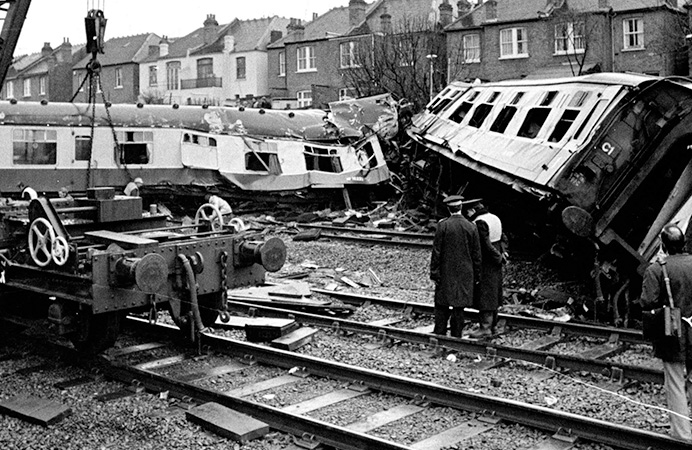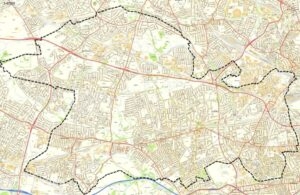The 50th anniversary of a local tragedy will be marked next week, on 19 December. Dr Jonathan Oates looks back at what happened when a train crashed with terrible consequences.
On the early evening of 19 December 1973, the 5.30pm commuter train had left London Paddington on the way to Oxford. It was travelling at 70mph. As it passed through Acton and Ealing there were signs that something was not right. Mr Owen, the driver, later recalled when the train was going through Ealing Broadway station: “It lurched from side to side, but righted itself, straight away, so I thought it must be a faulty track.”
Mr Pearson, an assistant in the Paddington passenger manager’s office, was travelling in the third coach of the train. He later said: “Everything seemed all right for about 20 seconds, then suddenly we were rocking all over the place and the carriage tipped over.”
Mr Owen resumed his account: “Then, when we were accelerating out of the station, the cab suddenly flew up into the air, crashed down on its side and finally stopped.”
One man was hurled from his seat ‘and literally flew like a pea out of a pod through the window and out on to the track,’ claimed a passenger.
Shockingly, in one carriage, 8 people were crushed to death when another carriage crashed into theirs. They died instantaneously from traumatic asphyxia. Another person was found dead in another carriage and another underneath the stricken carriage. Apart from these 10 fatalities, which it took 9 hours to recover, another 94 people were injured – 53 of whom were seriously enough hurt to be taken to hospital.
Ealing’s emergency response team and people from Craven Avenue, the road which was nearest the scene of the crash, came to the help of those stricken. These dramatic events were not chronicled in the local press because there was a newspaper strike from November 1973 to January 1974.
There was an inquiry in February 1974. It was ascertained that the locomotive of the train had been having its fuel pipe repaired at Old Oak Common depot on the previous day. At this time the battery was being recharged and so the battery box metal cover, weighing 60 pounds, had been opened. It had been closed subsequently but crucially it had not been locked. Tragically, this had not been checked.
This unlocked cover had swung open and over when the train was gathering speed and the cover crashed into the points near West Ealing station, shearing through the direction rods. This led to the train hurdling over the shattered points at high speed and then crashing into the embankment.
What was not ascertained was who was responsible for checking that the cover was closed. One man recalled someone closing the cover but did not know who it was. Nominally, the depot supervisor was responsible for all the work that occurred to the trains which were serviced there. No one recalled closing it or locking it. It was noted that this was not the first time that the battery box was found to have been unlocked but never before with fatal consequences. At the inquiry, the conclusion was that this was a case of human error and therefore impossible to prevent in future. It was a freak occurrence. The 10 deaths were recorded as accidental deaths.







